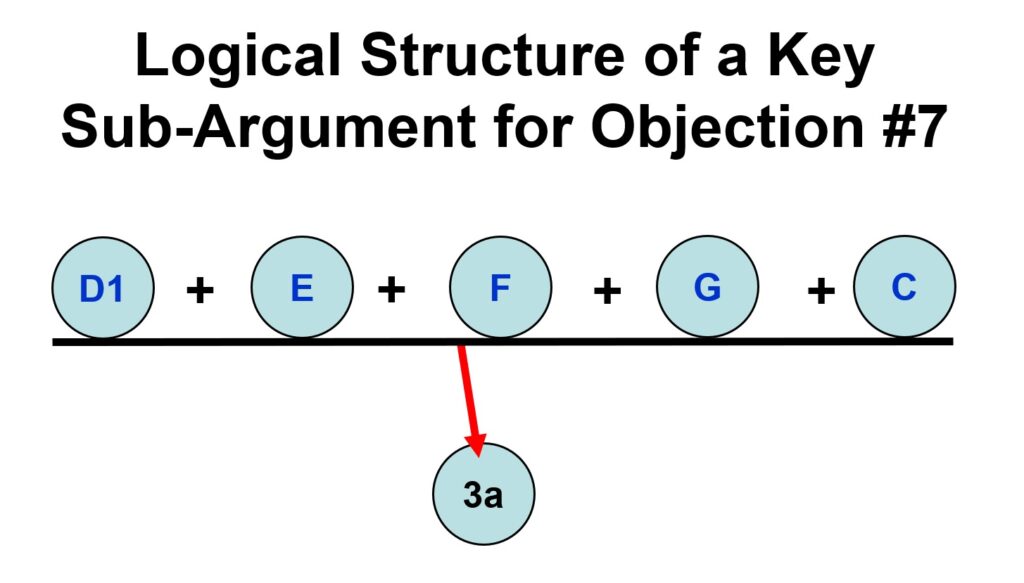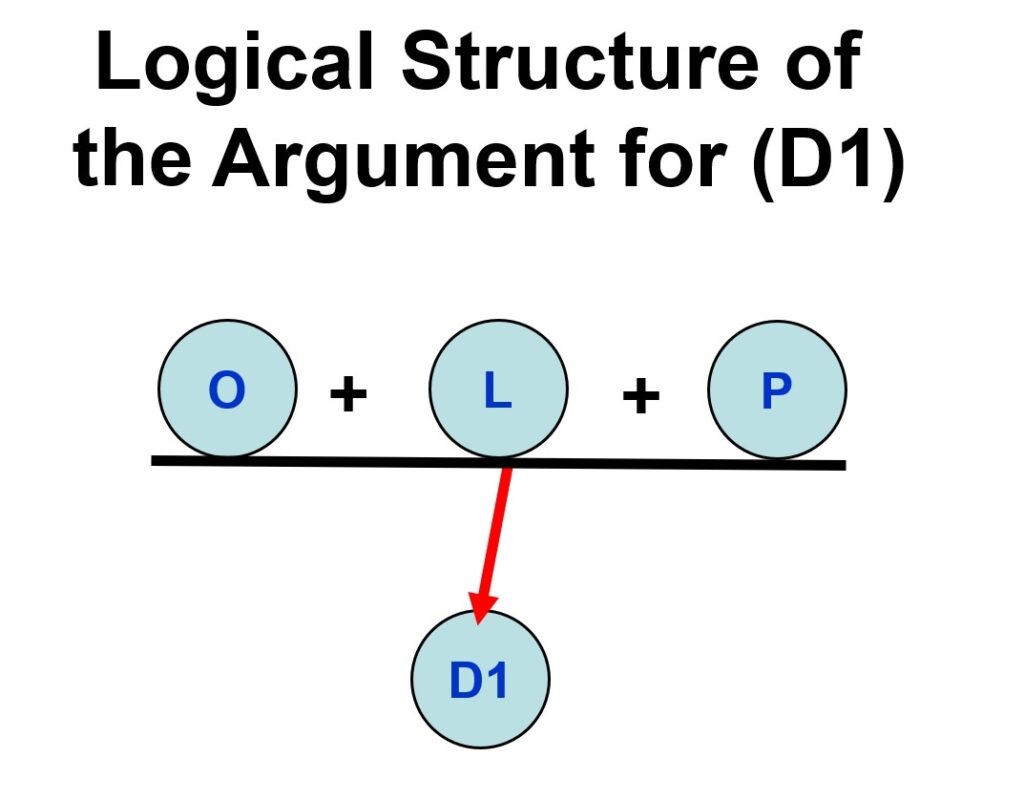Kreeft’s Case Against the Swoon Theory – Part 26: The Sub-Argument for Premise (D1)
WHERE WE ARE
In Part 23 of this series, I provided a careful analysis of the argument constituting Objection #7 (Who Moved the Stone?) by Peter Kreeft and Ronald Tacelli against the Swoon Theory in Chapter 8 of their Handbook of Christian Apologetics (hereafter: HCA).
In Part 24 of this series, I showed that the key premise (B) in the core argument of Objection #7 is FALSE, and that the core argument is thus UNSOUND, and that Objection #7 against the Swoon Theory therefore FAILS.
In Part 25 of this series, I showed that premise (C) in the sub-argument for the key premise (3a) is FALSE. Thus, the argument for (3a) is UNSOUND and should be rejected. Therefore, premise (3a) is DUBIOUS and might well be FALSE.
Because I have shown that the key premise (B) in the core argument of Objection #7 is FALSE, and that the key premise (3a) is DUBIOUS, we already have very good reason to conclude that Objection #7 against the Swoon Theory FAILS. However, I will continue my evaluation of the sub-argument for the key premise (3a) to show that the other premises in that argument are DUBIOUS. This will cast further significant doubt on premise (3a) and on the ability of Kreeft and Tacelli to determine whether an argument is good or bad (or horrible).
THE SUB-ARGUMENT FOR THE KEY PREMISE (3a)

D1. Jesus did NOT move the stone from the door of Jesus’ tomb on the weekend after Jesus was crucified (unless Jesus experienced a supernatural resurrection).
E. The Roman soldiers did NOT move the stone from the door of Jesus’ tomb on the weekend after Jesus was crucified.
F. The Jewish authorities in Jerusalem did NOT move the stone from the door of Jesus’ tomb on the weekend after Jesus was crucified.
G. It is NOT the case that some or all of Jesus’ eleven remaining disciples moved the stone from the door of Jesus’ tomb on the weekend after Jesus was crucified.
C. There are only four possible natural explanations for how the stone was moved from the door of Jesus’ tomb on the weekend after Jesus was crucified: (a) Jesus moved the stone, (b) the Roman soldiers moved the stone, (c) the Jewish authorities in Jerusalem moved the stone, or (d) some (or all) of Jesus’ remaining eleven disciples moved the stone.
THEREFORE:
3a. There is no plausible natural explanation for how the stone was moved from the door of Jesus’ tomb on the weekend after Jesus was crucified.
THE SUB-ARGUMENT FOR PREMISE (D1)

O. IF the Swoon Theory is false, THEN Jesus did NOT move the stone from the door of Jesus’ tomb on the weekend after he was crucified (unless he experienced a supernatural resurrection).
L. IF the Swoon Theory is true, THEN Jesus did NOT move the stone from the door at Jesus’ tomb on the weekend after he was crucified.
P. EITHER the Swoon Theory is true OR the Swoon Theory is false.
THEREFORE:
D1. Jesus did NOT move the stone from the door of Jesus’ tomb on the weekend after Jesus was crucified (unless Jesus experienced a supernatural resurrection).
EVALUATION OF THE SUB-ARGUMENT FOR PREMISE (D1)
Premise (O) is FALSE, so the sub-argument for premise (D1) is UNSOUND. Thus, premise (D1) is DUBIOUS and might well be FALSE. Because (D1) is a premise in the argument for the key premise (3a), this gives us another good reason to doubt premise (3a) and to conclude that Objection #7 against the Swoon Theory FAILS.
Here, again, is premise (O):
O. IF the Swoon Theory is false, THEN Jesus did NOT move the stone from the door of Jesus’ tomb on the weekend after he was crucified (unless he experienced a supernatural resurrection).
There are counterexamples to premise (O) that show (O) to be FALSE. These are scenarios in which the Swoon Theory is FALSE but where Jesus moved the stone from the door of his tomb:
- The Twin Theory Scenario: Jesus had a twin and his twin was crucified based on the mistaken belief that the twin was Jesus. So, Jesus was not crucified (contrary to the Swoon Theory), but since he was not crucified, he would have no problem moving the stone at his tomb (which was actually the tomb of his twin).
- The Mistaken-Identity Theory Scenario: Someone who looked like Jesus (but who was not his twin) was crucified based on the mistaken belief that this person was Jesus. So, Jesus was not crucified (contrary to the Swoon Theory), but since he was not crucified, he would have no problem moving the stone at his tomb (which was actually the tomb of a person who looked like him).
- The Swoon-Hallucination-Combo Theory Scenario: Jesus was crucified and survived his crucifixion, but the appearances of the “risen” Jesus were all hallucinations, not appearances of the surviving Jesus (contrary to the Swoon Theory). Jesus was not scourged before being crucified, the thorns in the crown of thorns pointed outward rather than inward, Jesus was tied rather than nailed to the cross, and the story of the spear wound to Jesus’ side was an unhistorical legend.
- The Swoon-Conspiracy-Combo Theory Scenario: Jesus was crucified and survived his crucifixion, and the appearances of the “risen” Jesus were appearances of the surviving Jesus, but the disciples remained unconvinced that Jesus had risen from the dead (contrary to the Swoon Theory). The disciples then agreed with each other to LIE about what had happened and to preach that Jesus had risen from the dead. Jesus was not scourged before being crucified, the thorns in the crown of thorns pointed outward rather than inward, Jesus was tied rather than nailed to the cross, and the story of the spear wound to Jesus’ side was an unhistorical legend.
Based on the above counterexamples, it is clear that the Swoon Theory can be FALSE while it is also the case that Jesus moved the stone from the door of his tomb. Thus, it is clear that premise (O) is FALSE, and therefore, the sub-argument for premise (D1) is UNSOUND and should be rejected, meaning that (D1) is DUBIOUS and might well be FALSE.
Premise (L) is also FALSE, so the sub-argument for premise (D1) is clearly UNSOUND. Thus, premise (D1) is DUBIOUS and might well be FALSE. Because (D1) is a premise in the argument for the key premise (3a), this gives us another good reason to doubt premise (3a) and to conclude that Objection #7 against the Swoon Theory FAILS.
Here, again, is premise (L):
L. IF the Swoon Theory is true, THEN Jesus did NOT move the stone from the door at Jesus’ tomb on the weekend after he was crucified.
Kreeft and Tacelli mistakenly believe that the Swoon Theory implies that Jesus would have been “a weak and frail half-dead man” on the weekend after his crucifixion. But this is NOT an implication of the Swoon Theory, because the Swoon Theory does NOT imply or assume that: (a) Jesus was severely scourged before being crucified, or (b) a crown of thorns with many long and sharp thorns that pointed inward towards Jesus’ scalp was shoved forcefully onto his head before being crucified, or (c) Jesus’ hands or arms were nailed to the cross, or (d) Jesus’ feet were nailed to the cross, or (e) a Roman soldier shoved a spear deep into Jesus’ side while Jesus was still on the cross.
Thus, the Swoon Theory does NOT imply that Jesus would have been “a weak and frail half-dead man” on the weekend after his crucifixion. So, the Swoon Theory does NOT imply that Jesus would have been unable to move the stone from the door of his tomb on the weekend after he was crucified. Therefore, premise (L) is FALSE.
Because premise (O) and premise (L) are both FALSE, it is very clear that the argument for premise (D1) is UNSOUND and should be rejected. That means that premise (D1) is DUBIOUS. Thus, we have another good reason to doubt the key premise (3a) in the core argument of Objection #7 and to conclude that Objection #7 against the Swoon Theory FAILS.



